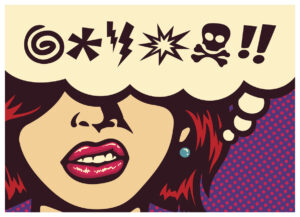Tips on writing and editing from Jerry Seinfeld
The comedian’s coffee-table book about his streaming series is a surprising source of useful advice.

In the introduction to “The Comedians in Cars Getting Coffee Book,” Jerry Seinfeld explains why he chose the format for the video series.
“I’m not much for podcasts,” he writes. “I think virtually everything in life could do with a good edit. Your closet, your diet, your conversation, everything. That’s what a beautifully put-together stand-up set is.”
That’s one of a handful of insights this coffee-table book offers to anyone who cares about writing and editing. It’s funny, to be sure, featuring excerpts of his interviews from the video series, which started in 2012 on Crackle, Sony’s streaming service. It was picked up by Netflix in 2017, where it ran until 2019. The book also includes a discussion by the show’s production team.
The interviews are organized in chapters with themes such as “Family” and “Relationships,” as well as photos of Seinfeld and his guests. If these insights are unexpected to some readers, they aren’t unintentional. As the book reveals better than the videos, Seinfeld and his guests take their craft very seriously.
Here’s eight tips on writing and editing courtesy of a book that won’t fit on many bookshelves.
1. What’s the bigger thing? Every story should be about one thing. It will have other things in it, but it’s about one thing.
Larry David, the co-creator of the “Seinfeld” sitcom, which ran from 1989 to 1998, was also the executive producer and head writer for its first seven seasons. When he says the pilot “wasn’t a very good show,” Seinfeld agrees:
Seinfeld: Because we thought the overexplored flimsy thing would work.
David: Yes.
Seinfeld: But it didn’t really.
David: Not really.
Seinfeld: Right, you need a bigger thing. And then the smaller things live underneath it.
David: Absolutely. But in the end, they combine with the bigger thing. They’re attached in a way.
2. Accept that writing is hard. If writing was easy, everyone would be good at it. Worrying that it isn’t easy just makes it harder.
Steve Martin describes a time when he and Bob Einstein, who died in 2019, were neighbors and working as writers for “The Smothers Brothers Comedy Hour.”
Martin: We were together constantly. And, you know, you’d be laughing, laughing, laughing, and then you’d just go, ‘Okay, we got to write a bit.’ It would be like this gloom.
Seinfeld: That is so funny. That is such the reality of comedy writing — is the gloom.
3. Get it on paper. Don’t work to make the first draft perfect, just make it a draft.
Seinfeld tells Steve Martin: “My friend once taught me a great thing. When we wrote some sketches one time and we got stuck, he said, ‘Let’s just write the ten worst ideas we can think of in ninety seconds.’ We each take a pad. Ninety seconds. The ten worst ideas. And you find that whoever comes up with the ideas in there, he’s not thinking that this is good or this is bad. He’s just shoveling.
4. ABW: Always Be Writing. While on deadline, creativity sometimes comes in a flash. Other times, no. Even before you’ve done much reporting, write a headline and lede, or first sentence. They may change, but it helps focus your thinking and reporting. And it gets ideas floating around in the back of your mind, whether you’re driving, grocery shopping or waiting for a meeting to start.
Robert Klein says Richard Pryor once told him, “’We get our material similarly.’” And he was right, because it comes, spur [of the moment], and you write it down. We were completely different, but….”
Or as Kevin Hart says, “I have an idea of what I want to talk about basically in my phone.”
5. Be an aggressive editor of your copy. We fall in love with our own words, which makes editing our own stories challenging. It’s a love Seinfeld apparently can set aside.
“He’ll cull the best material and go to work on it, shaving it down until there’s not a wasted syllable,” Peter Holmes, the series’ editor says. “Then he’ll throw away the bottom third. Not because it’s bad, but because it’s not as good as the top two-thirds.”
“Business professionals can learn a lot from expert editors like Seinfeld,” communications coach Carmine Gallo writes in Inc.
6. A story should be as long as it is good. Clients often ask how long stories should be. We can’t answer any better than Tammy Johnston, the series’ executive producer.
“After we shot the first episode and started editing, we realized that idea [of a fixed length] just wasn’t really a viable way to approach this,” she says. “If the content keeps you interested and entertained for eight minutes, the episodes will be eight minutes. If there’s only four minutes of good content, then the episode will be four minutes.”
7. Make every word count. Writing for the internet encourages wordiness. The space is unlimited. Too often, the content requires an old-fashioned editing exercise called axe versus scalpel, which requires shortening a story by small bites and then big cuts.
Ted Sarandos, Netflix’s chief content officer in 2017, traces the origin of Seinfeld’s editing talent.
“I think he applies what he’s learned about editing his act to editing the show,” says Sarandos, promoted to co-CEO in 2020. “Jerry has very much squeezed every wasted word out of his act. Every syllable, every pause—they’re all very intentional. There’s not a lot of wasted anything in the show.”
8. Writing is a craft you can learn. Even though writing can be hard, there are techniques that make it easier. Martin asks Seinfeld, “Do you feel more ease [at] with writing now? Because I definitely do. I feel like, ‘Hey, you need something, here it is.’ That’s the way I feel.”
Or consider this exchange between Seinfeld and Jimmy Fallon.
Seinfeld: I have to ask you this question, ‘cause I don’t know any real musicians…. Why can’t these guys write a hit song later in life? Why can’t Billy Joel write another hit pop song? ’Cause we can still write funny bits. I’m sixty. I still can write great bits. I’ve got no problems. And it’s actually easier for me now.
Fallon: You know the rhythm and the craft.
Seinfeld: I know the craft better, yeah. Why?
They agree they don’t know why Billy Joel hasn’t written another hit song.
Before Seinfeld started work on the video series, he said he looked at other shows about comedians and found them “pointless, unenlightening, and, most egregiously, no fun.”
Making what’s important interesting is a challenge that every professional communicator appreciates.
Tom Corfman is a senior consultant with Ragan Consulting Group, where he now invokes Seinfeld when conducting the Better Writers Program.
Schedule a call with Kristin Hart to learn how we can help you improve your communications effort with training, consulting and strategic counsel. Follow RCG on LinkedIn and subscribe to our weekly newsletter here.






